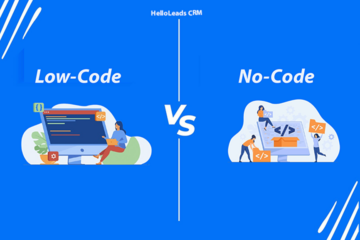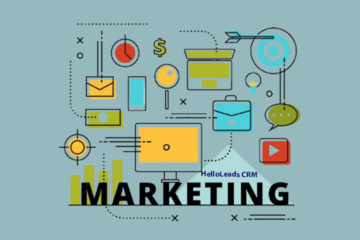
“You don’t close a sale; you open a relationship if you want to build a long-term, successful enterprise.” – Patricia Fripp
Have you ever felt a little intimidated by sales? Maybe you picture fast-talking salespeople pushing products on unsuspecting customers. But the truth is, sales can be a rewarding career built on strong relationships and helping people solve problems. The key to success in sales isn’t about being pushy, it’s about understanding your customer’s needs and becoming a trusted advisor. Think of yourself as a problem-solver, someone who can help them achieve their goals. The good news? You don’t need years of experience to develop these skills. Even as a beginner, you can start mastering these 6 powerful techniques and take your sales game from “hello” to “hero”!
In this blog, we will explore six powerful sales techniques that can transform your approach from simply making a pitch to becoming a trusted problem-solver, all while building lasting relationships and achieving success in your sales career.

1. Be a problem-solver, not a pitchman:
Imagine meeting someone stressed about a messy garage. Instead of just selling them a fancy toolbox, you ask what frustrates them the most. Maybe it’s keeping tools organized or finding things quickly. This is consultative selling. You focus on their needs and offer solutions that fit their situation.
Active listening: Listen actively to understand your customer’s pain points and goals. If you’re selling software to a small business owner, ask questions about their current challenges with existing systems.
Example: “I understand you’re looking for a software solution that can streamline your inventory management. Can you tell me more about the issues you’ve encountered with your current system?”
Problem-solving: Offer personalized solutions that address their specific challenges. Show how your product or service can solve their problems and meet their unique needs.
Example: “Based on what you’ve described, our software features real-time inventory tracking, which could significantly reduce errors and save your time.”
2. Talk benefits, not features: Focus on what matters to your customer
When selling, it’s crucial to highlight the benefits your product or service brings to the customer’s life rather than just listing its features.

Technique: Use the “pain-gain-solution” framework.
When engaging with customers, briefly explain the problem they face (the pain), then describe the positive outcome they’ll achieve with your solution (the gain). This approach resonates deeply because it addresses their needs directly:
Example: “Are you tired of losing track of important documents? Our cloud storage system makes it easy to access your files anytime, anywhere.”
3. Make real connections: Trust and longevity
Selling is about building relationships, not just making transactions. Pay attention to what your customer is saying, both verbally and with their body language. Show genuine interest by asking thoughtful questions and actively listening to their responses. Use mirroring techniques, subtly matching their body language and tone of voice to build rapport. Acknowledge their concerns and show empathy for their situation.
Authenticity: Be genuine and build rapport by showing empathy and understanding. For instance, if you’re selling insurance, demonstrate empathy towards their concerns about coverage and future needs.
Example: “I understand that choosing the right insurance plan can be overwhelming. Let’s go through your options together to find what best fits your needs and budget.”
Follow-Up: Stay connected beyond the initial sale. Follow up to ensure satisfaction and to stay top-of-mind for future needs.
Example: “I just wanted to check in and see how you’re finding the new system. Do you have any questions or feedback?”
4. Emotional Intelligence (EQ): understanding and connecting
“Your most unhappy customers are your greatest source of learning.” – Bill Gates
Emotional intelligence is crucial in sales for understanding and responding to your customer’s emotions. Don’t be afraid when a customer raises concerns – it’s a chance to clarify your value proposition! Listen patiently to their objection without interrupting. Use the “FAB” method (Features, Advantages, Benefits) to address their concerns. Explain how a specific feature of your product offers a clear advantage that directly benefits them.
Empathy: Put yourself in your customer’s shoes to build trust and rapport. Understand their perspective and adapt your communication style accordingly.
Example: “I can see this decision is important to you. Let’s discuss any concerns you have so we can find the best solution together.”
Handling objections: Address objections with empathy and understanding. Listen actively, acknowledge concerns, and demonstrate how your product or service resolves their issues.
Example: “I understand you’re concerned about scalability. Our solution is designed to grow with your business, and here’s how we’ve helped similar companies expand smoothly.”
5. Negotiation: it’s not about winning:
Negotiation is about finding a win-win situation. Research your customer and their budget beforehand. Be prepared to offer options or discuss pricing structures. If a deal doesn’t align with your company’s goals, be confident in walking away. Remember, it’s better to find the right fit than force a bad deal.
Preparation: Research and understand your customer’s needs and priorities before negotiating. Know your own objectives and potential concessions.
Example: “Based on our previous discussions, I understand that price is a concern for you. Let’s explore the different packages we offer and find one that fits your budget.”
Value proposition: Focus on value, not just price. Clearly communicate the unique benefits of your offering and how it meets the customer’s needs better than alternatives.
Example: “Our premium package includes additional features that will help you streamline operations and increase productivity, which aligns perfectly with your goals.”
6. Closing techniques: Sealing the deal

Closing a sale is often seen as the pinnacle of successful selling, where all previous efforts culminate in securing a commitment from the customer. It requires not only confidence and finesse but also strategic execution to guide the conversation towards a mutually beneficial agreement.
Trial closes: Throughout the conversation, gauge the customer’s readiness to buy. Use trial closes to confirm interest and address any lingering doubts.
Example: “If we can address these last few questions, are you ready to move forward today?”
Decision-making support: Guide the customer towards a decision by providing clear options and answering questions decisively.
Example: “Based on what we’ve discussed, Option A offers immediate cost savings and meets your current needs. Would you like to finalize the details?”
Conclusion
Remember, mastering these sales skills takes practice, but the rewards are significant. The more you hone your consultative approach, build strong relationships, refine your negotiation tactics, leverage emotional intelligence, and master closing techniques, the more you’ll not only elevate your sales performance, but also build a successful and fulfilling career.
So, are you ready to take your sales game to the next level? Start by incorporating these techniques into your daily interactions. You’ll be surprised at how quickly you can build trust, identify customer needs, and confidently guide them towards solutions. With dedication and these powerful skills in your arsenal, you can become a sales superstar! And remember, sales is not just about closing deals—it’s about opening doors to long-lasting relationships.
Share this blog :










